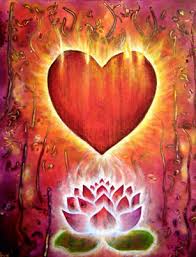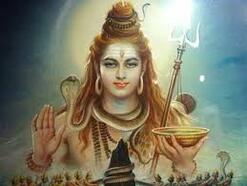|
Namaskar. There are three basic paths of yoga. One is bhakti, devotion. The other, karma, good work in the world with a sense of selfless service with doing things without attachment to the results of actions. And the third path is jnana yoga, the yoga of knowledge. It works with the mind. Bhakti works with the heart, opening the heart, and the feelings of the divine experience. Jnana works with the mind, restructuring the mind so that conditioned thoughts, attitudes, and ways of responding are let go. And karma works with being in the world and relating to other people, relating to service in the world, Seva. So these three paths, each have significant advantages, and when they are combined together they form a powerful structure that can integrate both mental development, development in the feelings and relationship to the infinite, and development in your daily life in your service attitude and work with others. When combined the three form a reinforcing system that can make real change, transformative change. But many times it is too much for someone to begin with all three and so one may begin only working with the mind, the attitudes and beliefs, deconstructing erroneous beliefs and gaining new insights and understandings, dissolving the conditioned mind. Or one may begin working with the heart, establishing a relationship to God, establishing a fundamental experiential feeling related to the Infinite. Developing love for the divine and through that feeling of love and devotion there comes great humility, great passion. When that detached understanding comes in action and you realize that the cosmic one is everywhere, both receiving and doing actions, then the results of actions do not stay with the ego because they are not done by the ego self, and the ego self does not feel attachment to the results. Then, when that happens this karma yoga wipes away the delusions of the mind, wipes away the samskaras, all of the attachments to the reactions of one's actions, and begins to free psychic space where there is no action no reaction of mind. When this overall science of yoga is applied, two phenomena develop in a person that brings them to the truth. One is that they develop vairagya and the other Viveka. Vairagya means detachment, true detachment, not the renunciation of an idea, not the renunciation of the belief that you will renounce the world, but true detachment.
When you begin to see that the Infinite is everywhere, God is everywhere, and only by the grace of that great divinity does any action come. When you begin to see there is no separate self to do anything, that everything, every molecule of you is made of that divine Beloved, the separation of I and Thou dissolve. True detachment comes because you realize that who you are, who you have been, are the same. It’s the same. And the feeling of attachment to the results of your actions begins to diminish. And this is true renunciation. Renouncing the attachment to the results of your actions. And thus, gaining a clear mind, clear vision, clear understanding of the nature of the God Self, and when that clarity is there, that discrimination, you become able to know the unreal from the real. You understand the deep nature of reality and you can discriminate knowing what is truth, what is truly real. This is a great power that comes from dissolving the conditioned mind, awakening the heart, and doing actions in the world with a detachment to the results of your actions. Thus, vairagya, renunciation, trie renunciation, and Viveka, true deep discrimination, the ability to know truth, to know the real from the unreal, come as a result of these yogas. And the Yamas and the Niyamas become doable, really doable as you follow these yogas. The Yamas and the Niyamas form the base for your action in the world. Action-based in love and loving-kindness without violence to other beings. Actions based on truth and deep honesty with self. Without coveting what someone else has, and without trying to secure yourself by accumulating more and more, you are able to live in the world with truth and kindness, and love. And thus you gain the power of a pure mind, pure thoughts, a pure heart, the simple childlike nature, and you gain the ability to be truly content with who you are, what you are, and with what life is. You become content. Santosha is achieved. And tapas, the ability to love selflessly, to have true loving-kindness comes, and the ability to know the truth, to understand the deep nature of your own self. This development of knowledge comes when you practice all of this. And finally the realization, the dissolution into the divine God Self. This is the culminating realization of the Yamas and the Niyamas and of the three yogas, the three primary yogas – bhakti, karma, and jnana. Without coveting what someone else has, and without trying to secure yourself by accumulating more and more, you are able to live in the world with truth and kindness, and love. And thus you gain the power of a pure mind, pure thoughts, a pure heart, the simple childlike nature, and you gain the ability to be truly content with who you are, what you are, and with what life is. You become content. Santosha is achieved. And tapas, the ability to love selflessly, to have true loving-kindness comes, and the ability to know the truth, to understand the deep nature of your own self. This development of knowledge comes when you practice all of this. And finally the realization, the dissolution into the divine God Self. This is the culminating realization of the Yamas and the Niyamas and of the three yogas, the three primary yogas – bhakti, karma, and jnana.
0 Comments
Leave a Reply. |
Author
|
Categories
All
Dharma
Forgiveness
Intro To Yama & Niyama
Living In Harmony
Niyamas
Spiritual Activism
Spiritual Awakening
The Nature Of Love
What Are The Niyamas
What Are The Yamas & Niyamas
What Is Gratitude?
Yamas



 RSS Feed
RSS Feed